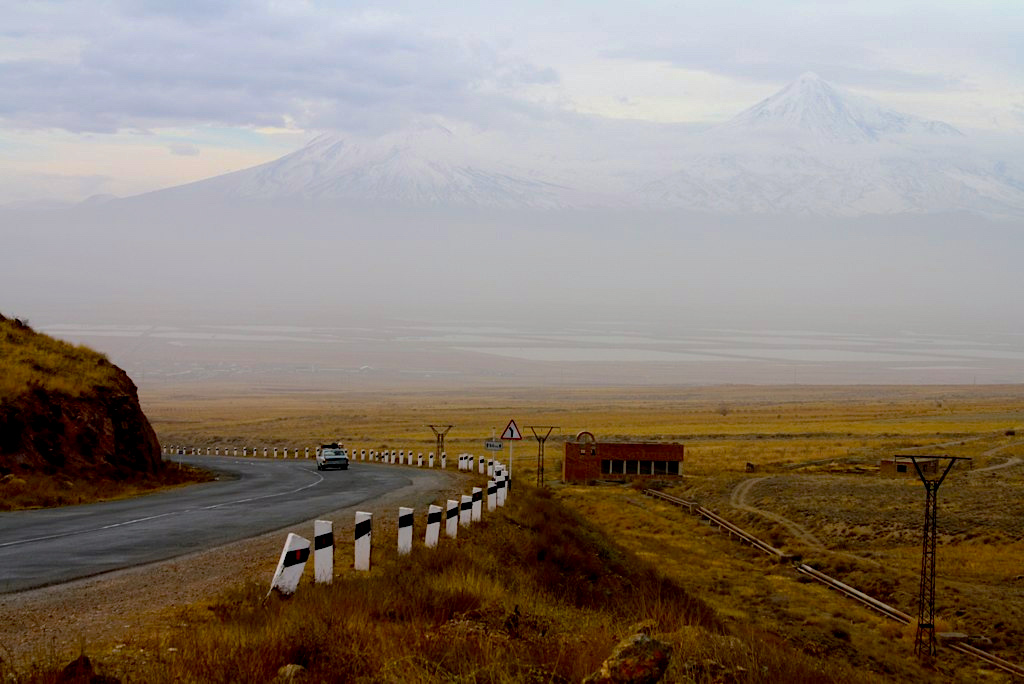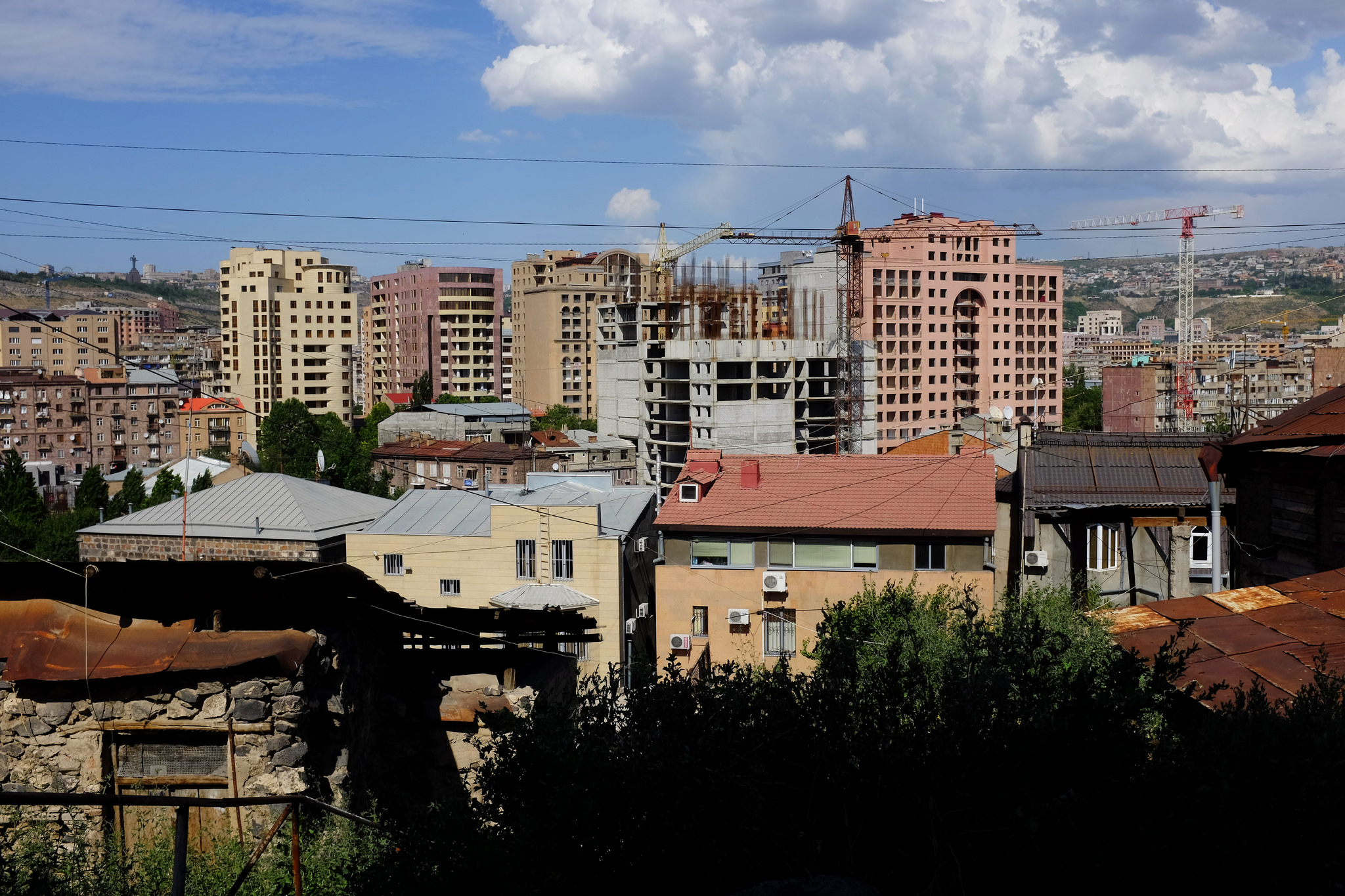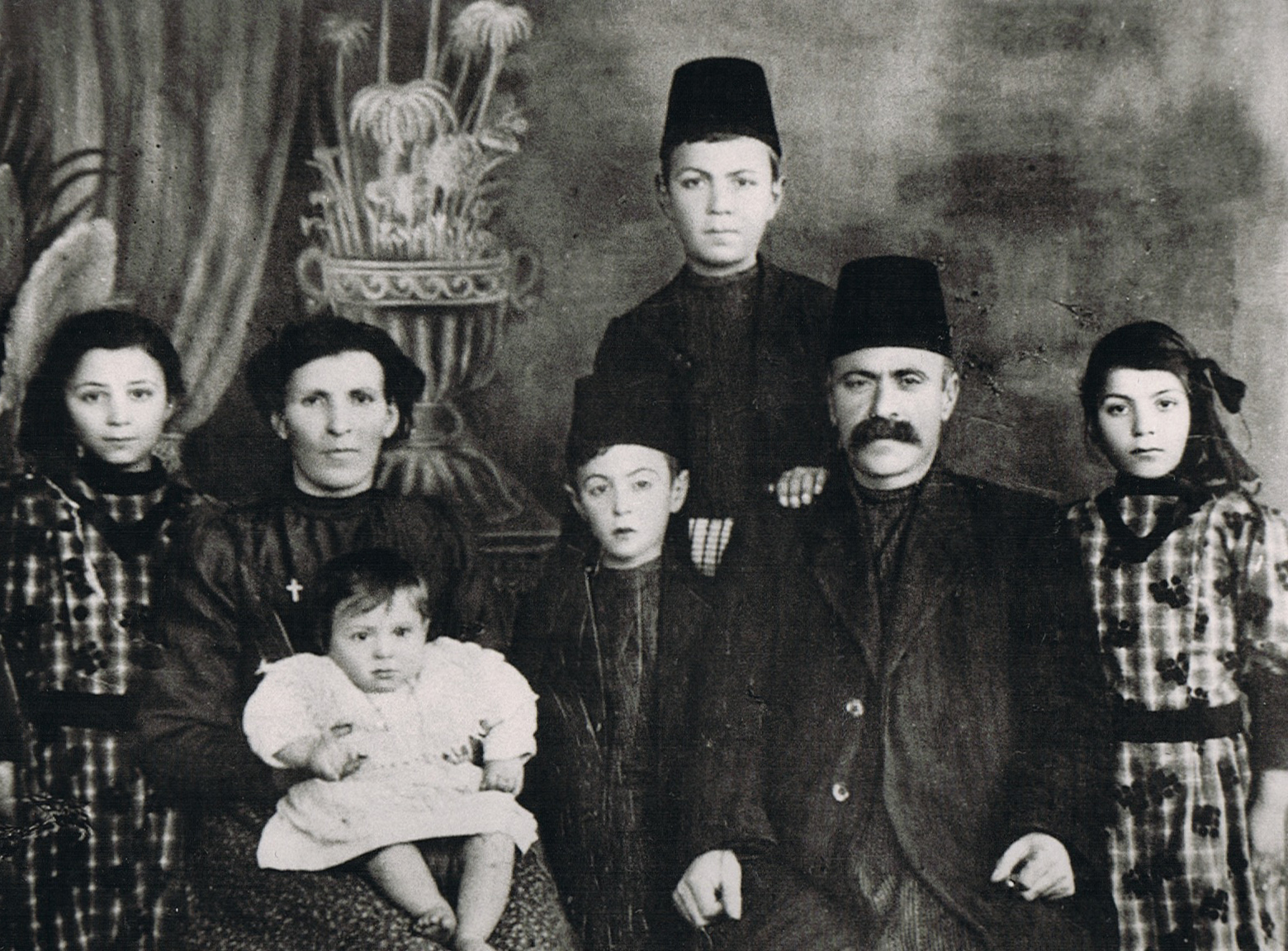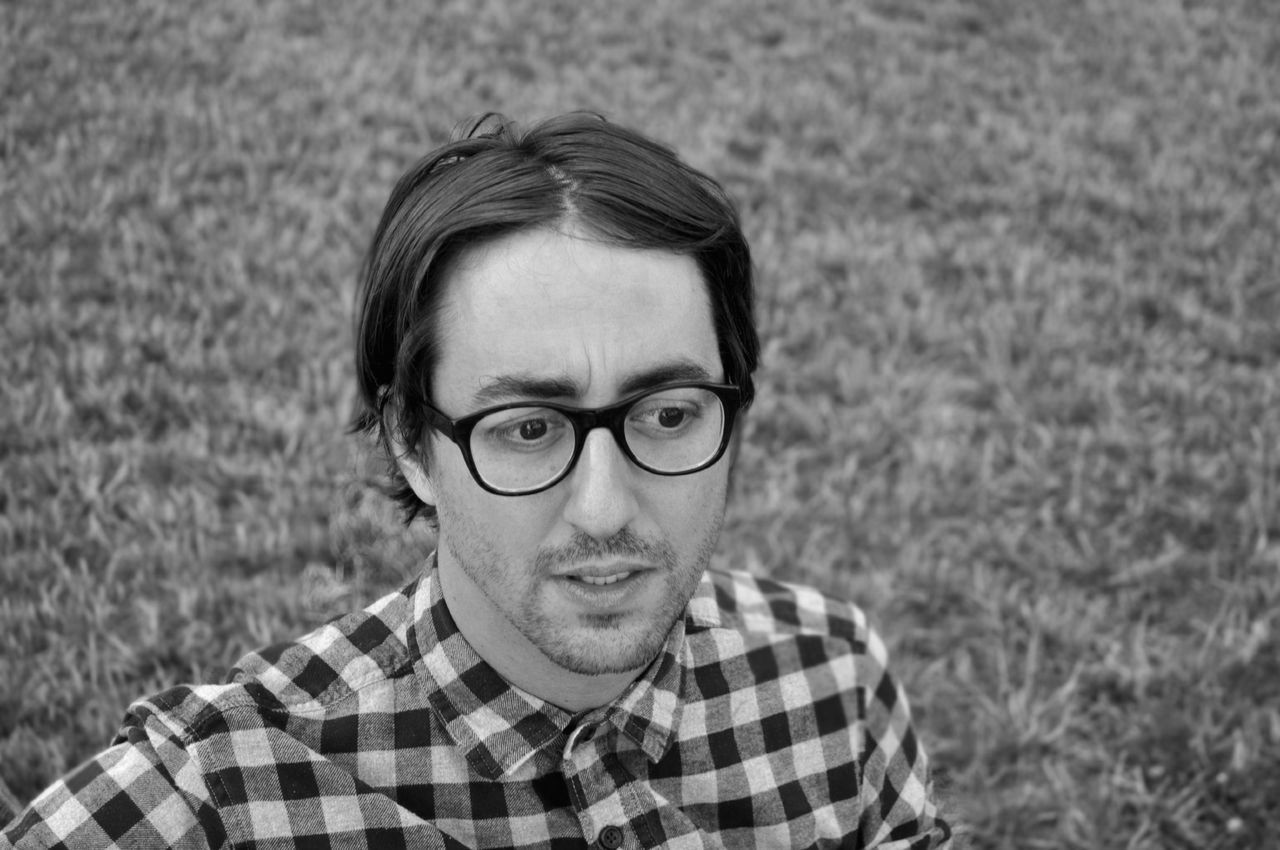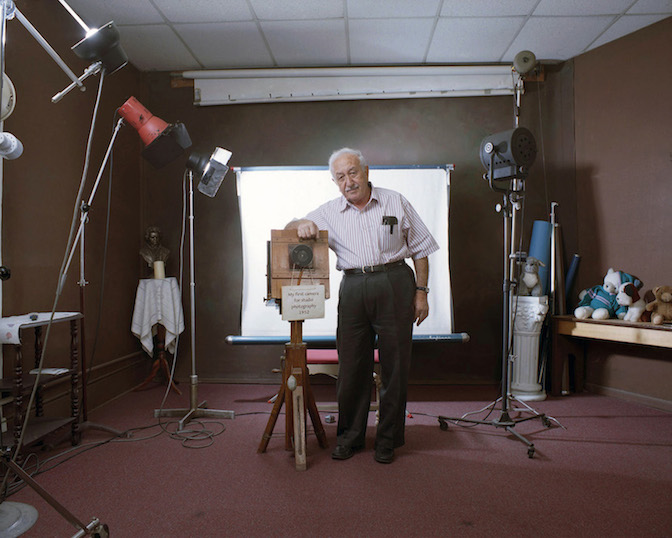How the “Daredevils of Sassoun” are Spinning an Armenian Folktale into Modern Reality: 2016 Yerevan Hostage Crisis and Protests
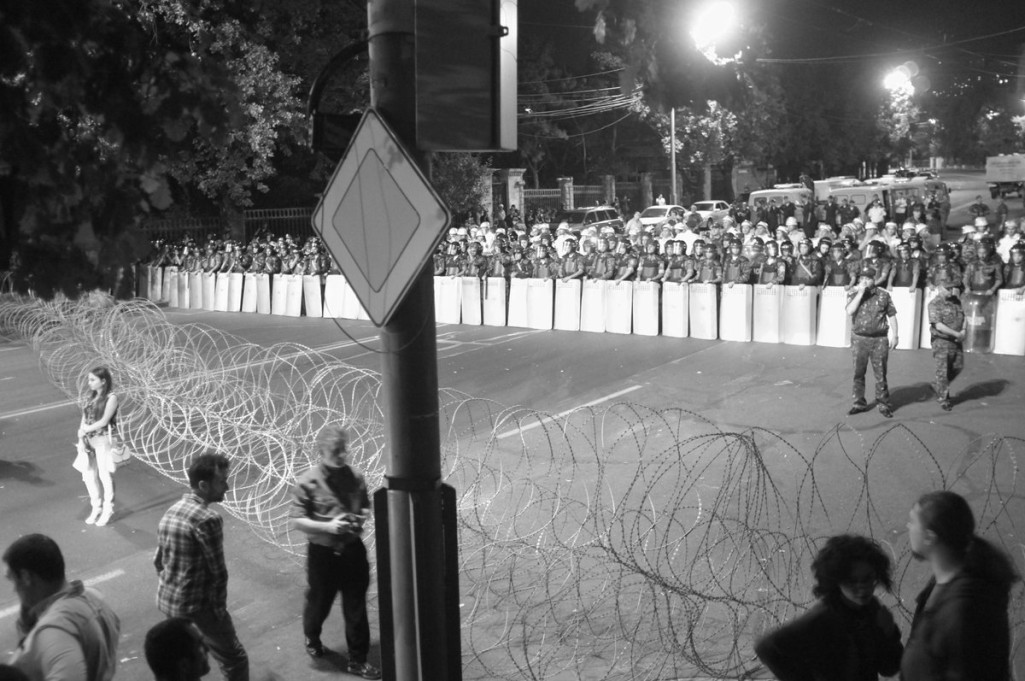
In the early morning hours of July 17 in the Erebuni district of Armenia’s capital Yerevan, an armed group took over a police station, holding the officers hostage. Soon after, a grainy video shot by phone appeared on Facebook. The camera gave a real-time, 2-minute glimpse into a certain kind of chaos that was about to unfold in the country.
“We are doing this for you,” said a man holding a gun, the black and grey camouflage bullet proof vest strapped tightly on his chest, addressing people in Armenia. “For you, this is the path we’ve taken. Come out on the streets, that is our wish.”
He also asked for the release of all political prisoners, including Jirair Sefilian, Gevorg Safaryan, Shant Harutyunyan and more.
Suddenly, the man filming turned the camera back on himself.
“It’s been three and a half hours that this police station is under our control,” he said. “We are saying that there is no other way than this way.”
This was the moment that began something many fear cannot be stopped, that has fundamentally changed the air, the energy, the mood of Armenia. Three days before, across the closed border in Turkey, an attempted coup had taken place, and left the country in disarray.
A woman interviewed on Radio Free Europe who heard several gunshots at 5 a.m., thought it was something more serious, she said, like the Turkish coup spilling across the border.
But it was something even more serious than anyone could have predicted and in hindsight, it was only a matter of time before the tension began to accumulate on the streets. Fueled by frustration, with no help from Yerevan’s unrelenting summer heat, people came out onto the streets as the hostage crisis unfolded, their numbers growing everyday. Their motivations seemed varied, some backing the actions and demands of the so-called rebel group, some desperate to take some kind of action themselves after years of corruption and the country’s ruling elite have in many ways taken the economy – and the people, hostage, too.
In the 14 days since the standoff began, two police officers have been killed, several people – including members of the armed group – have been injured, negotiations have occurred, hostages have been freed, medical hostages have been taken and there has been a brutal crackdown by government forces on protesters (including Canadian-Armenian actress Arsinee Khanjian) as well as documented attacks on journalists who are covering the ongoing situation. Explosions during protests that have been rocking Yerevan for two weeks have even been GIF-afied:
The post has been amended with an update of the situation found below the original piece.
Who is the group behind Yerevan’s unfolding crisis?
The rebel group, who are both being praised as heroes and called ultra-national terrorists depending on who you ask, refer to themselves as the “Daredevils of Sassoun,” drawing inspiration from a classic Armenian folk poem where a group of men struggle against the forces of good and evil in the Middle Ages, fighting for the Armenian cause of independence. They are Karabakh war veterans who also count Pavlik Manukyan among them, a popular and iconic cultural figure in the country. When interviewed by journalists this week who wanted to know what might happen next, Manukyan told them that the armed group will die but they will not leave the police station without winning. “We don’t want any blood to be spilled,” he said, holding a gun with one hand.
They are connected to the Armenian opposition group, Founding Parliament (once known as “Pre-Parliament”), whose leader Jirair Sefilian, was one of the political prisoners they asked to be released. Sefilian is a veteran of the Nagorno-Karabakh conflict and RFE carries an explainer of the movement and his background here.
Sefilian and the group are against territorial concessions when it comes to the Karabakh conflict. This is an important note, especially given the deadly fighting that occurred in April earlier this year on the border of Armenia and Azerbaijan, where some of the worst clashes in decades saw both soldiers and civilians were killed, actions that severely restricted any notions of a peaceful resolution.
Earlier in the crisis, prominent opposition figure Nikol Pashinyan, who was once a political prisoner himself stepped in to help with negotiations, adding the first inspirational attempt at cohesiveness to a rather disorganized mass of people. His speech centered on the theme of non-violence, both from the government as well as protestors.
“This symbol of this movement is open and raised hands,” he said as he raised his own, with the crowd following. “To show that there is no need for us to have in our hands, sticks, stones or wood to show our strength. We are strong with our mind, we are strong with our love, we are strong with our history, we are strong with Armenia, with Karabakh, with the destiny of the Armenian people, with the destiny of Armenian children, and there is no power that can stop us.”
Since then, more and more protestors have come out on the streets, however there is no clear “leader” of this movement or where it is currently heading.
Why is this happening?
Though the armed group have galvanized the protests, the general root of the continued street gatherings can be traced to deep discontent with a system rife with corruption, an over 30 percent poverty rate, high emigration rates and a ruling elite, which includes current president Serzh Sargsyan, that has turned much of the country into its own personal playground. Even an anti-corruption council was accused of lavish spending last year.
The armed group, as well as protestors, have also called for the resignation of Sargsyan, who they blame for growing inequality and graft that permeates virtually all segments of Armenian society, from lavash to the law. Sargsyan came to office in 2008, amid a controversial election that was rife with voter fraud, protests that saw 10 people killed, caused a media blackout and state of emergency.
In one district, election observers noted that all but one of the 1,449 votes were for Sargsyan.“I told the government that the probability of this is as high as the birth of a dog with five legs,” said Geert Ahrens, head of the organization’s Election Observation Mission here, to the New York Times. Up until that point, Armenia was known as a “bright example” among countries that were once part of the Soviet Union, its government allowing more dissent than most, the Times reported.
CivilNet’s Roubina Margossian interviewed political scientist Irina Ghaplanyan for added context when the standoff began:
Some residents of Armenia have also criticized the worldwide Armenian diaspora for failing to see Armenia’s current socio-economic problems, while inadvertently supporting a status quo that further divides Armenian society into the haves and have nots, both financially and with a healthy dose of indifference. The criticism also falls on the shoulders of diasporan organizations like the Armenian National Committee of America, an organization who considers fostering “public awareness in support of a free, united and independent Armenia” one of their main goals, according to their website, but has largely remained silent on socio-economic and corruption issues in the country.
Armenia has seen an increase in civic demonstrations in the last few years, where residents have protested everything from public transportation prices to last year’s “Electric Yerevan,” which powerfully culminated against a hike in electricity rates that widely utilized social media and brought international media attention.
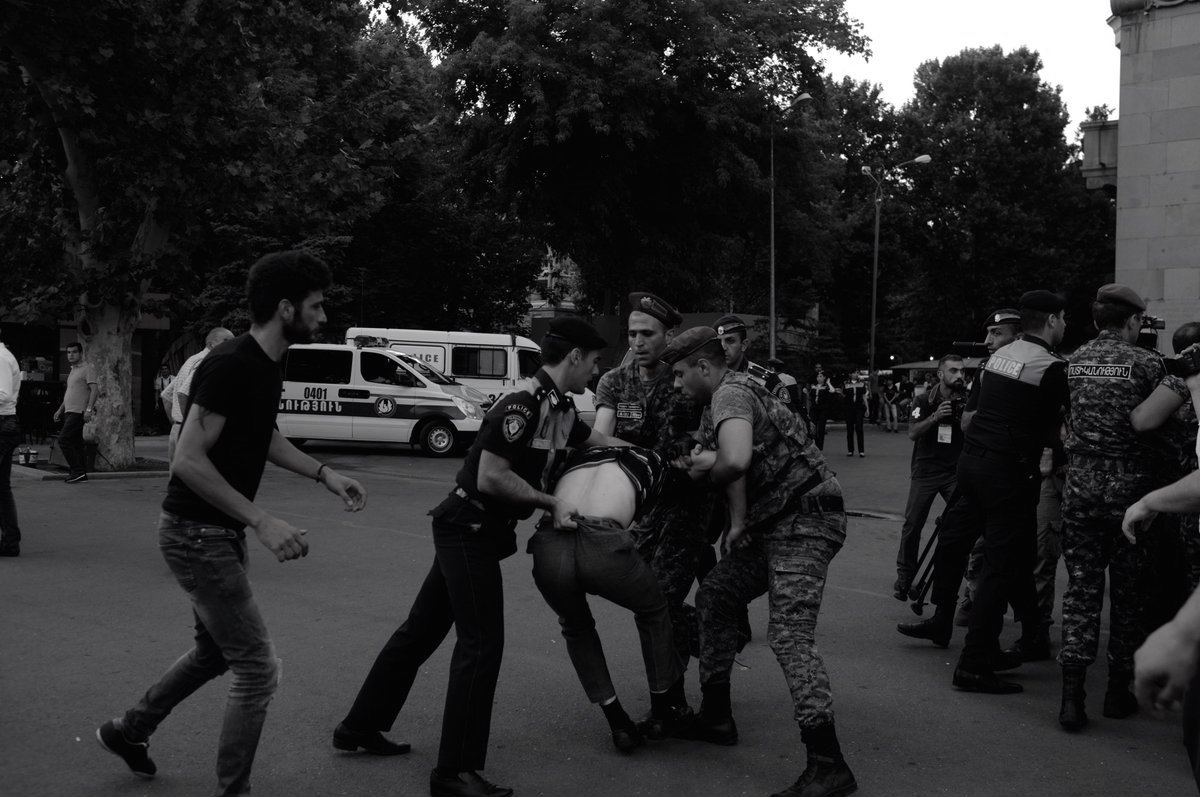
Police in Yerevan tussle with a protestor as Armenia faces a hostage standoff. Reports of police brutality among protestors and journalists have been reported. © Vachagan Gratian
Police crackdown against residents and journalists
The central, unifying message of this current protest is convoluted, built between multiple layers, aims and grievances, but what has remained clear is the brutal police crackdown faced by protestors, residents and journalists alike, who were also being provoked by plain clothes police officers within the crowds. On July 29, Protestors reported attacks which left them severely injured. Many of these injuries and the tense standoff are documented by the all-woman photojournalist collective 4Plus through their Facebook page. Residents who often had nothing to do with the protests were also injured, and detained, with some being dragged from their homes and others taking to social media to say that their relatives were taken by police and could not be located. In a tragic twist of fate, a 16-year-old boy who had come to Yerevan from the Gegharkunik province to shop for his upcoming birthday was hit in the eye, allegedly by police agents, reported CivilNet.TV on their Facebook page. Doctors determined it could not be saved.
Attacks on journalists who were beaten and prevented from carrying our their jobs were also reported. Journalist Gegham Vardanyan documented these attacks in a post at Media.am. HETQ, Armenia’s investigative journalism outlet reported on how journalists became police targets and were injured with grenades. Residents who were not even involve with the protests reported unlawful detentions, . Three RFE journalists were also attacked, reporting that the men who attacked them made sure they were journalists before beating them.
What’s happening now?
Things seemed calm on the morning after clashes, an RFE livestream showing a few police officers at the scene of the hostage standoff, with the stream inadvertently catching the somber yet unrelenting voice of an elderly man singing national Armenian songs that deal with the always present Armenian theme of resistance. At night, more protestors gathered, which at one point culminated in one protestor shockingly committing an act of self-immolation live. Other protestors surrounded him to quickly pour water on the burned and disoriented man, who refused to get into a police car and took a taxi to get medical help instead. HETQ carries graphic photos of what is likely the most disturbing symbol of the protests so far (just days later, the man, identified as Kajik Grigoryan, died because of his burn wounds)
Meanwhile, the European Union have released statements condemning the use of violence from all sides. The Armenian office of Transparency International have also released a statement requesting the assistance of international human rights organizations to condemn and prevent police violations and deploy observer missions to document violations.
The U.S. ambassador to Armenia, Richard Mills, criticized Armenian police for their excessive use of force. Ashot Aharonyan, the head of the department of public relations for the Armenian police posted on Facebook about an officer who was killed in the ongoing standoff on July 30.
RFE continues to broadcast an ongoing livestream as does CivilNet. HETQ continues to update its website with the latest. The hashtag #Erebuni can be followed on Twitter to get up to date news on the crisis. We will update this page with new developments.
Update:
Multiple press outlets in Armenia report that the armed group surrendered on Sunday, July 31 around 8 p.m. to authorities. In a livestream and audio carried by news outlet 1in.am, one armed group member declared that they were putting down their weapons in order to avoid more bloodshed, adding that they wanted to create a spark, and feel satisfied that they have. At least 47 people have been detained in connection with the police station seizure, reported RFE.
President Sargsyan released a statement addressing the hostage crisis, calling it an unacceptable situation that has come to an end. He called for a thorough investigation and open trial
“From now on we will allow no one to take our country hostage, we will allow no one to undermine the foundation of our state, problems in Armenia will not be solved through violence or arms,” the statement says.
“Yerevan is neither Beirut nor Aleppo. Let no one aspire to import Near East solutions of the previous century, of the Cold War to Armenia. Let those who don’t comprehend this need to look at the history of Lebanon’s civil war or at the consequences of the civil war going on the moment in Syria and draw conclusions.”
He thanked journalists for their work and apologized for the brutal and bloody crackdown on members of the media, calling it “our greatest blunder” and saying he was confident that it will never happen again. He also addressed the Nagorno-Karabakh conflict, saying that “there will be no unilateral concessions in the resolution of the NK issue. Never. Nagorno Karabakh will never be part of Azerbaijan.” The full statement can be read here.
HETQ however, took Sargsyan and his words to task in an editorial penned by the investigative outlet’s English editor, Hrant Gadarigian: “The “country”, far from being held hostage by a band of Artsakh War vets and disgruntled citizens who “were mad as hell and couldn’t take it anymore”, was actually held hostage for two weeks by the regime’s law enforcement arm and the thugs they payroll to quash any political dissent.

